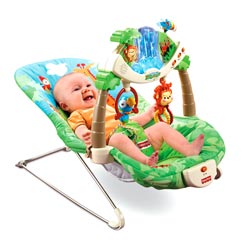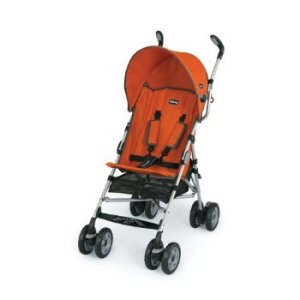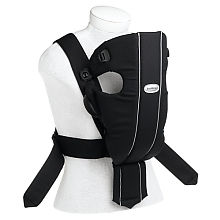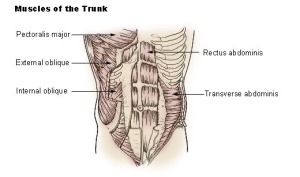
Stage 2 is appropriate for babies older than 8 months.
- 1 lb. organic broccoli
- 1 1/2 - 2 cups of water
Wash thoroughly the broccoli florets with water. Cut the florets and stems in pieces and boil in water.
After about 20 minutes poke them with a fork. When the stems are very soft and tender, remove the pan from the stove. Don't throw the water away, it contains several minerals and vitamins. Mash the content with a hand mixer, or a blender until it turns into a smooth paste.
Preparation time: about 30 minutes.
Nutritional value: high in vitamin C, antioxidants, and fiber.
- Mashed Azhuki, or Black Beans (recipes also valid for Split Peas, Chick Peas and Lentils)
- 1 lb. dry organic Azhuki or Black Beans
- 4 cups of water
Wash thoroughly the beans with water. Soak the beans in water overnight to drastically reduce the cooking time.
The day after, cook the beans with water for 40-45 minutes. Add more water as it dries up. When the beans are very soft, remove the pan from the stove. Mash the content with a hand mixer, or a blender until it turns into a smooth paste.
Preparation time: about 30 minutes.
Nutritional value: high in Iron, protein, folate, potassium and fiber.
- 1 lb. organic chicken or turkey breast
- 1 1/2 - 2 cups of water
Wash thoroughly the breasts with water. Cut them in pieces and boil in water.
After about 20 minutes check to make sure they are fully cooked. Remove the pan from the stove. Don't throw the water away, it is a delicious chicken stock! Puree the breasts with the stock using a hand mixer, or a blender until it turns into a smooth paste.
Preparation time: about 30 minutes.
Nutritional value: high in protein and fiber
- 1 lb. Salmon or trout filets
- 1 1/2 - 2 cups of water
Wash thoroughly the filets with water. Make sure there are no bones. Boil the filets in water.
After about 15 minutes check to make sure they are fully cooked. Remove the pan from the stove. Don't throw the water away, it is a delicious fish stock! Puree the filets with the stock using a hand mixer, or a blender until it turns into a smooth paste.
Preparation time: about 20 minutes.
Nutritional value: high in protein and omega-3
- Chicken, Asparagus and Zuchini with Herbs
- 1 lb. organic chicken breast
- 1/2 lb. organic asparagus
- 1/2 lb. organic zuchini (green and yellow)
- Oregano and parsley
- 2 cups of water
Wash thoroughly the chicken, the asparagus and the zuchini. Cut the chicken breasts, the zuchini and the asparagus in smaller pieces, and boil them all together in water, along with the herbs.
After about 20 minutes poke them with a fork. When the stems are very soft and tender, and the breasts are fully cooked, remove the pan from the stove. Don't throw the water away, it contains several minerals and vitamins. Blend the content with a hand mixer, or a blender until it turns into a smooth paste.
Preparation time: about 30 minutes.
Nutritional value: high in vitamin C, antioxidants, fiber and proteins.
- Chicken, Sweet Potato and Cauli-Flower with Onion
- 1 lb. organic chicken breast
- 1/2 lb. organic sweet potatos
- 1/2 lb. organic cauli-flower
- 1 tablespoon of chopped onion
- 2 cups of water
Wash thoroughly the chicken and the cauli-flower with water, and the sweet potato with a brush. Cut the chicken breasts, the sweet potato with the skin, and the cauli-flower in chunks of an inch approximately. Boil them all together in water, along with the onion.
After about 20 minutes poke the pieces with a fork. When the sweet potato is very soft and tender, and the breasts are fully cooked, remove the pan from the stove. Don't throw the water away, it contains several minerals and vitamins. Peel the sweet potato with your fingers. Don't use the skin. Blend the content with a hand mixer, or a blender until it turns into a smooth paste.
Preparation time: about 30 minutes.
Nutritional value: high in vitamin C, betacarotene, antioxidants, fiber and proteins.
- Broccoli with Cheddar Cheese (yummy!)
- 1 lb. organic broccoli
- 3 to 4 oz of cheddar cheese
- 1 cup of water
Wash thoroughly the broccoli with running water. Cut the broccoli into chunks, both florets and stems. Boil the pieces in water.
After about 10 minutes poke the pieces with a fork. When the stems are soft and tender, remove the pan from the stove. Don't throw the water away, it contains several minerals and vitamins. Shred the cheese, or cut it into small cubes, and add to the boiled broccoli. Wait until it melts with the heat of the cooked broccoli. Blend the content with a hand mixer, or a blender until it turns into a smooth paste.
Preparation time: about 15 minutes.
Nutritional value: high in vitamin C, antioxidants, fiber, calcium and proteins.
- Napa Cabbage with Onion and Eggs
- 1 1/2 lb. organic napa cabbage
- 1/2 small organic onion
- 2 large eggs
- 1 cup of water
Wash thoroughly the napa cabbage with running water. Chop the napa cabbage into 1/4 inch slices, and dice the onion. Boil both ingredients in water.
After about 10 minutes stir thoroughly. When the cabbage is soft and tender, throw both eggs (yolk and whites). Stir it again, breaking the eggs, mixing all ingredients. Remove the pan from the stove. Don't throw the water away, it contains several minerals and vitamins. Blend the content with a hand mixer, or a blender until it turns into a smooth paste.
Preparation time: about 20 minutes.
Nutritional value: high in vitamin A, C, folate, iron, protein and calcium.
- Organic Brown Rice and Beans (Great source of Protein!)
- 1 lb. organic beans (brown or black)
- 1 cup of dry brown rice
- 1/4 gallon of water
Wash thoroughly the beans. Soak it in water overnight to reduce time on the stove.
Boil the beans with the water in a large pan for about an hour, until the beans are soft. Add the brown rice and let it cook for another 15 to 20 minutes, or until the rice is cooked. Stir from time to time to make sure the beans don't burn at the bottom of the pan. Remove the pan from the stove and let it cool off.
Blend the content with a hand mixer, or a blender until it turns into a smooth paste.
Preparation time: about 1 to 2 hours, depending on how long beans were pre-soaked.
Nutritional value: high in iron, calcium, proteins, fiber and carbohydrate.
 We all know that pesticides are not good for our bodies. The exposure to toxic chemicals can have an even more adverse effect in children. The metabolism of a fetus, infant and child is less able to metabolize and inactivate toxic chemicals, being more vulnerable to the harmful effects of pesticides.
We all know that pesticides are not good for our bodies. The exposure to toxic chemicals can have an even more adverse effect in children. The metabolism of a fetus, infant and child is less able to metabolize and inactivate toxic chemicals, being more vulnerable to the harmful effects of pesticides. .jpg)







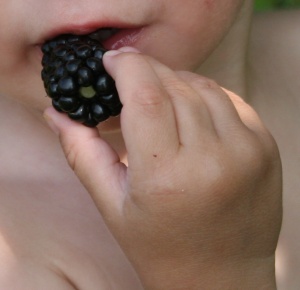




 Saving resources is not only good for the environment, but also great for you and your family. Your kids see their parents as role models. Our daily attitude will teach them how to take care of themselves and the environment, respecting our community.
Saving resources is not only good for the environment, but also great for you and your family. Your kids see their parents as role models. Our daily attitude will teach them how to take care of themselves and the environment, respecting our community. additional equipment. Having an umbrella stroller is very helpful to navigate through airports, and at destinations. Also, bringing some comfort food items, such as cereal or Cheerios, can be a huge plus while the little one gets acquainted with different food. Depending on where you are staying, bringing a portable crib, such as the Pack & Play can be very useful, and is usually light enough to carry around.
additional equipment. Having an umbrella stroller is very helpful to navigate through airports, and at destinations. Also, bringing some comfort food items, such as cereal or Cheerios, can be a huge plus while the little one gets acquainted with different food. Depending on where you are staying, bringing a portable crib, such as the Pack & Play can be very useful, and is usually light enough to carry around.









